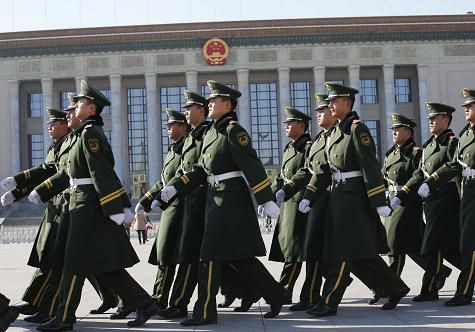China's Third Plenum Reform Agenda: Winners And Losers

The Chinese economy probably won’t get an immediate boost from the reform package agreed at the Third Plenum last week. But if implemented effectively, these reforms could help Beijing steer clear of the risk of an outright hard landing, economists say.
“The reforms would reduce the threat of hard landing caused by misallocation of capital and resulting widespread overcapacity,” wrote Mark Williams of Capital Economics. “Not only would average growth be somewhat higher in a post-reform China, but risks would be lower than if reforms didn’t happen.”
The Third Plenum set the year of 2020 as the date when major breakthroughs in all major reform areas will be achieved -- mainly how resources, benefits and costs are allocated in the economy.
Winners And Losers
By end-2020, the Chinese economic system will work like this if reform pans out according to the plan, according to Societe Generale economist Wei Yao.
Corporate sector. The private sector -- domestic and foreign companies alike -- will compete freely on a level playing field with state-owned enterprises (SOEs) in nearly all the sectors.
Financial markets. Interest rates will be fully liberalized and (largely) determined by a market that has experiences with defaults. Foreign financial investors will be able to access (most) domestic financial assets with few strings attached and, likewise, Chinese households will have much greater freedom to make overseas direct or portfolio investment.
Land and other resources. Farmers will be able to sell their non-agriculture land directly to the market, without it being grabbed first by local governments and converted into state land. Prices of oil, gas, water, electricity and telecommunication services will be subject to the market force of supply and demand, and so subsidies -- implicit and explicit -- will be removed. The cost of pollution will be internalized by tax (to some extent).
Fiscal system. Local governments will care less about growth targets, responding to a more comprehensive evaluation system that puts equal (or more) emphasis on social targets and risk management. The central government will both run and fund the lion’s share of the pension, health care, education and other social security systems. Land sales revenue will become a smaller part of the local government revenue and local taxes a bigger part. Spending and revenue will be broadly matched at various levels of the government, fulfilling the critical condition for complete abolishment of the Hukou system. Direct bond issuance by local governments will be permitted and the proceeds will be used mainly for a more selective list of infrastructure projects.
If the reforms were implemented successfully, the composition of growth will shift.
Williams pointed out that a rising share of income going to households would support consumer spending. Conversely, a shift of income away from state-owned firms and capital intensive industries would dampen investment spending. The service sector will benefit, while heavy industry will slow. Logistics, tourism and health care are among the sectors that should do well, while commodities producers will suffer.
Risks
The sequence of reform will matter a great deal. Of all the reforms, pro-business policy -- especially corporate sector liberalization -- can generate positive gains more quickly than others, thus helping to offset the deleveraging drag and mitigate financial risk.
Even if all reforms go as planned, how Beijing manages market expectations when going through reform pains could make huge difference to China’s growth trajectory.
“Liberalization means letting go of control, but letting go of control means that the chance of things going wrong will rise,” Yao said.
© Copyright IBTimes 2024. All rights reserved.






















